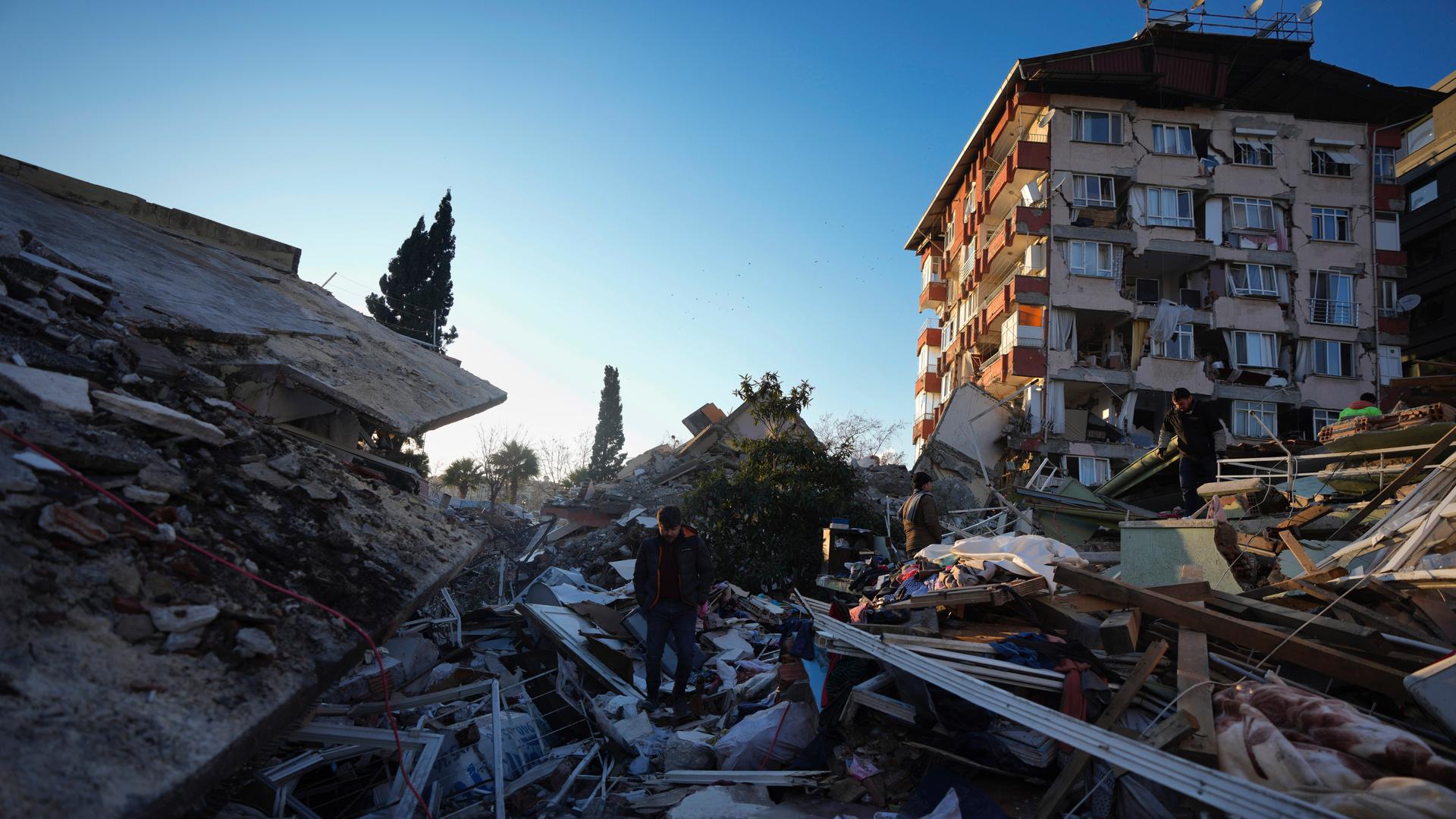The geology behind the deadly earthquakes in Turkey and Syria
A magnitude 7.8 earthquake emanated from southeast Turkey early Monday morning, toppling buildings and killing thousands of people in the country and in neighboring Syria.
The death toll has now surpassed 12,000, with tens of thousands of injured. Search teams from around the world have joined local emergency personnel in Turkey and Syria to look for victims.
But what caused the devastating quakes that are among the deadliest this century?
Most of Turkey, experts explain, sits on a slab of the Earth’s crust called the Anatolian Plate, which ends near the border with Syria.
“We have in the eastern Mediterranean a number of plates like a jigsaw puzzle,” said Tuncay Taymaz, a seismologist at Istanbul Technical University in Turkey.
This jigsaw puzzle is in constant motion. For instance, the massive, Arabian Plate to the south of Turkey is pushing northward, “which is mostly squeezing Turkey and the Anatolia[n] plate,” explained USGS seismologist Susan Hough.
Early Monday morning, the pressure along the East Anatolian fault zone running between the Anatolian Plate, to the north, and the Arabian Plate, to the south, had become too high for the crust to sustain, according to Zoë Mildon, an earthquake geologist at the University of Plymouth.
At a certain moment, “this rock cannot anymore withstand or resist this big energy,” said Marleine Brax, director of the National Center of Geophysics in Lebanon. “And it will slip. And this is what we call an earthquake.”
In the southern Gaziantep province of Turkey, at 4:17 a.m. local time, the part of the Anatolian Plate along the fault line slipped, lurching westward. The resulting earthquake measured 7.8 on the Richter scale, and it unleashed a ferocious amount of energy — the equivalent of detonating 8 million tons of TNT. The quake’s sheer power played a big role in making it so lethal.
Much of that energy emanates as waves.
“So, any earthquake, you can think of it as a symphony,” Hough said. “It’s releasing energy with a range of tones, or frequencies.”
Some of those frequencies cause more damage than others. There are the booming low tones — low-frequency waves like ocean swell that travel great distances but tend not to be too troublesome. And then, there are the higher-frequency waves, like choppy seas, that cause a lot of jitter.
“If you’re shaking the ground up and down every one second, that’s the energy that tends to be damaging to most buildings,” Hough said.
These are the vibrations that pancaked multistory buildings and reduced high-rises to heaps in southern Turkey, and northern Syria next door.
After Turkey’s major 1999 quake, the country updated its building codes. But a lot of construction predates that change, and that’s another reason this quake was so damaging. Buildings fashioned largely from concrete unfortified with steel rebar crumble more easily when shaken.
Taymaz blames faulty ethics in his country for a good share of the destruction.
“If you do everything by the book,” like earthquake-proof housing, he said, “you will be alright. But [there are] not many obeying the rules. There are, of course, a lot of corrupted engineers, scientists, manufacturers, you name it.”
Meanwhile, as buildings were collapsing, the seismic waves rippled away from the fault line. Tremors were picked up on seismographs thousands of miles away. People actually felt the shaking in neighboring countries.
By the time the energy reached places like Lebanon, Egypt, and Israel, Hough said it was mostly made up of the low-frequency waves. The more damaging, higher-frequency waves just don’t travel that far.
“Just like if you were listening to a distant symphony, you wouldn’t hear the piccolo, you might hear the bass drum,” she said.
Some nine hours after the 7.8 earthquake, an unusually large 7.5 aftershock rang out.
Seismic processes like these can take centuries to build up, but they can change human lives in a matter of seconds. Now, the window of rescue, complicated by the bitter cold, is rapidly closing.
The World is an independent newsroom. We’re not funded by billionaires; instead, we rely on readers and listeners like you. As a listener, you’re a crucial part of our team and our global community. Your support is vital to running our nonprofit newsroom, and we can’t do this work without you. Will you support The World with a gift today? Donations made between now and Dec. 31 will be matched 1:1. Thanks for investing in our work!
